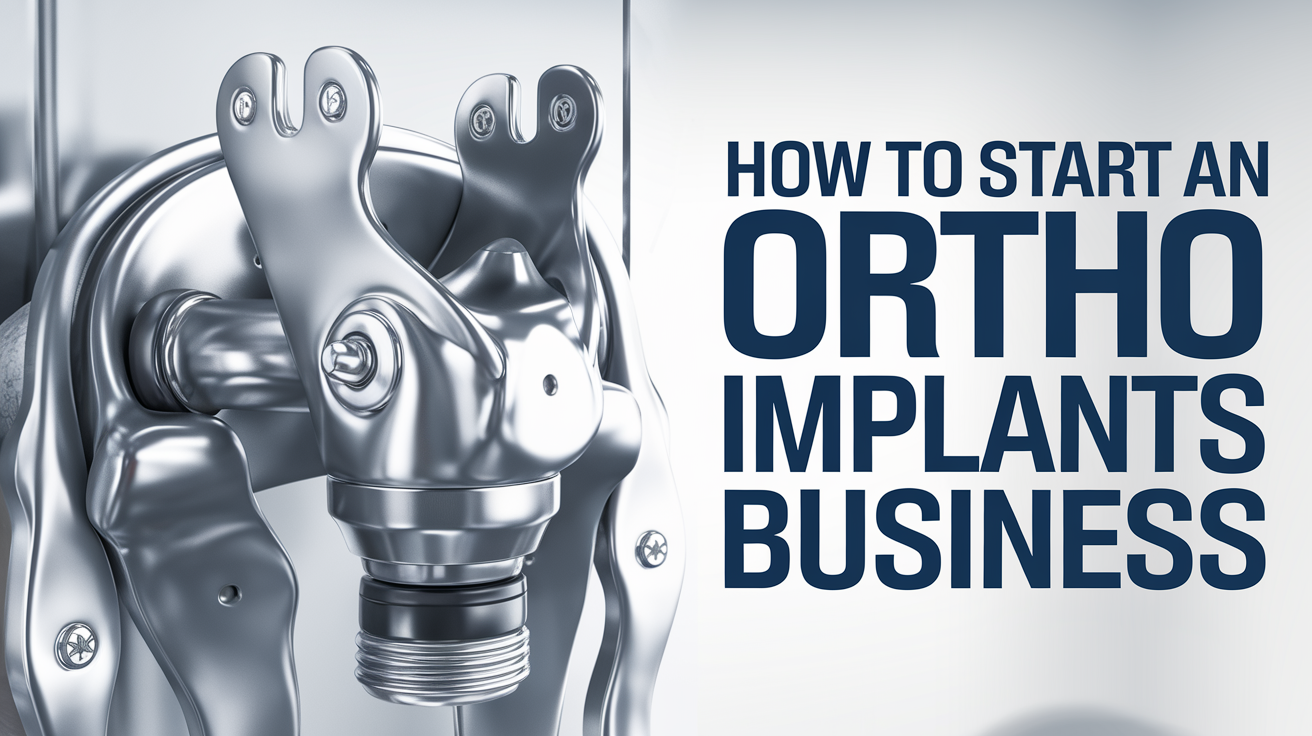The medical device market of India maintains a growing momentum where orthopedic implants represent a fast-growing sector. A significant profit potential exists for starting an Ortho Implants business in India based on the expanding market demand for orthopedic surgeries and treatments. The article delivers an entire guide on establishing an Ortho Implants business that includes thorough market research together with real-world starting insights.
Market Overview
The Indian orthopedic implants market demonstrates predicted expansion at 7.5% annually from 2021 to 2026 and anticipates achieving a total value of USD 4.2 billion in 2026 according to India Brand Equity Foundation. The market expansion stems from three main factors which include a growing elderly population alongside rising road accident statistics and increasing numbers of osteoporosis patients. As part of the National Health Mission the health sector receives government attention which drives business expansion.
The treatment of fractures and bone deformities requires ortho implants which include nails and screws and plates. These implants find their applications mainly within trauma medicine as well as spine procedures and procedures requiring joint replacements. Product solutions designed for these prevailing market needs enable your business to penetrate an expanding and profitable market segment.
Step 1: Conduct Market Research
Composition of a successful venture begins by comprehending market conditions properly. Research the current market demand for orthopedic implants as well as the expenses and crucial competitors from the industry. The market segments for implants consist of four main categories: Intramedullary Nails (IM Nails) and Bone Plates (Locking and Non-locking) in addition to Bone Screws (Cancellous and Cortical).
- Intramedullary Nails (IM Nails)
- Bone Plates (Locking and Non-locking)
- Bone Screws (Cancellous and Cortical)
The business sector proves profitable because of what reasons?
The need for orthopedic implants within India continues to expand at a growing rate. The number of Indian people above sixty who face orthopedic problems is expected to cross 140 million by 2025. The business owner of Ortho Implants benefits from the expanding elderly population and rising healthcare knowledge in this market.
According to Market Reports the standard orthopedic implant prices in the market vary between INR 2,000 and INR 10,000. A proper Ortho Implants business strategy incorporating manufacturing and delivery methods enables sizeable profitability returns.
Also Know More About : Ortho Implants: Manufacturing Plates, Screws, and Nails
Step 2: Create a Business Plan
Prior to ventures into market development start by identifying your target customers. Your plan should include:
A Feasibility Report will evaluate the financial condition that supports your business. Startup expenses and projected cash inflows and point where expenses equal revenues should appear in your business plan.
The results from your market research will specify both the business’ operation field and its prospective potential.
The Business Strategy section must present details about your sales strategies while describing distribution channels as well as methods for acquiring customers. You should create strategic relationships with health care facilities together with medical establishments.
Niir Project Consultancy Services offers consultancy services through which you can acquire necessary resources such as feasibility reports with market research results to smoothly and precisely plan your operation.
Step 3: Choose a Manufacturing Process
The following choice needs attention as it decides between owning implant production facilities or partnering with external producers. The benefit of manufacturing within the company is complete control of product quality and total cost reduction over time even though outsourcing costs less at first.
Ortho implants are constructed out of titanium or stainless steel raw materials because they deliver excellent strengths alongside resistance to corrosion and their capability to blend with body tissues. Raw material expenses together with production accuracy stand as critical factors for producing top-quality products.
The production of implants requires CNC (Computer Numerical Control) machines and further specialized equipment that a company should obtain. Operation of the manufacturing process requires adherence to ISO certification standards for product quality assurance.
Step 4: Understand Regulatory Requirements
Every Ortho Implants enterprise requires mandatory regulatory approval to operate. The regulatory body for orthopedic implant medical devices in India features two divisions – “medical devices” covered by Drugs Controller General of India (DCGI) duties. Apply for a license to produce and distribute medical implants because the Medical Device Rules of 2017 govern such operations.
All your products must meet the specified regulatory standards which include:
- ISO 13485 (for quality management)
- CE Marking(for European market entry)
The process of securing FDA approval becomes obligatory when you make plans to deliver products to the United States market.
The approval duration for compliance requirements should be considered when establishing your business schedule.
Step 5: Set Up Distribution Channels
Your Ortho Implants business needs solid distribution pathways to start its operations successfully. Your first step should be forming alliances with orthopedic surgeons along with hospitals and clinics. You should present surgeons and hospitals with both excellent products and price discounts.
The business could achieve broader market penetration by working with medical supply distributors while opening an e-commerce platform for immediate patient purchases.
Read More About : Orthopedic Implants Market
Step 6: Financial Planning and Investment
The total investment needed to launch an Ortho Implants business spans from INR 50 lakhs to INR 1 crore based on operation scale size and selected manufacturing methods. The necessary expenses encompass equipment expenses together with regulatory fees and raw material costs and marketing expenses.
You can fund this through:
- Self-funding
- Bank loans
- Venture capital investment
The return on investment (ROI) occurs between two and three years based on product demand levels combined with market penetration success.
Step 7: Marketing and Branding
You will achieve market success in the competitive orthopedic implant sector through the development of robust branding and marketing strategies. Having both a distinctive brand recognition and online marketing strategy will improve your market visibility. Your audience outreach strategy must consist of using digital marketing strategies in combination with social media platforms alongside medical trade show participation. The establishment of trust between brand and customers becomes possible through certifications and professional accreditations.
Conclusion
Beginning an orthopedic implants business in India provides both a high profit potential and essential purposes for meeting India’s expanding healthcare requirements. Niir Project Consultancy Services provides expert guidance that entrepreneurs need along with the steps mentioned above to access this promising market.
An orthopedic implants business in India will become a crucial market participant when your company obtains key resources alongside approval permissions and an effective distribution network.










